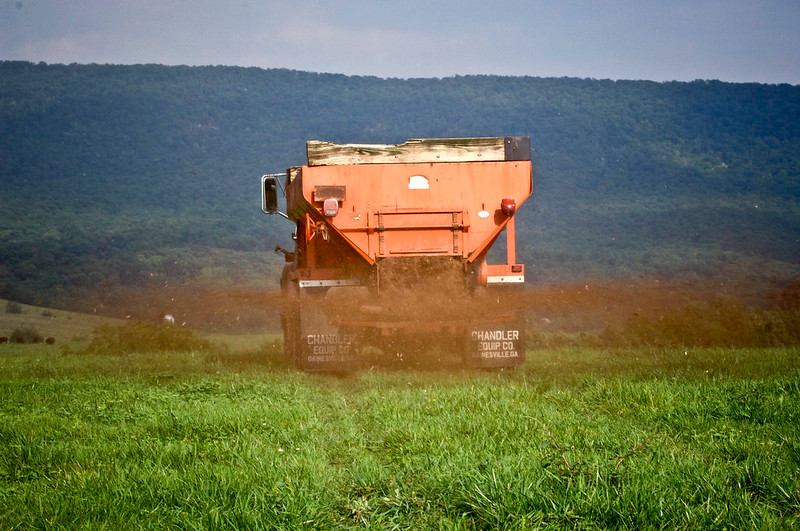
farmers in Rockingham County spreading poultry litter in their fields in September 2008
Source: US Department of Agriculture, 20120105-OC-AMW-0400

farmers in Rockingham County spreading poultry litter in their fields in September 2008
Source: US Department of Agriculture, 20120105-OC-AMW-0400
A large percentage of agriculture in Rockingham, Page, and Accomack counties is the production of chickens and turkeys. Large poultry houses, a form of Concentrated Animal Feeding Operations (CAFOs), create concentrations of excrement, used bedding, and uneaten feed large enough to require special attention.
Poultry litter is rich in nitrogen and phosphorus, key nutrients which fertilize the soil, plus carbon in the bedding material. Spreading some of the waste product on the sandy fields on the Eastern Shore, and in the Shenandoah Valley, can be enhance soil productivity. The standard rate for applying poultry litter is 1.5 tons per acre once every three years.
However, repeated application can increase soil phosphorus concentration to a level that exceeds plant and soil assimilative capacities. Even converting the litter into biochar does not sequester all the phosphorous; it can still leach through the soil and pollute nearby streams. As a result, managing poultry litter is of particular concern for meeting the Chesapeake Bay Total Maximum Daily Load (TMDL) standards.1
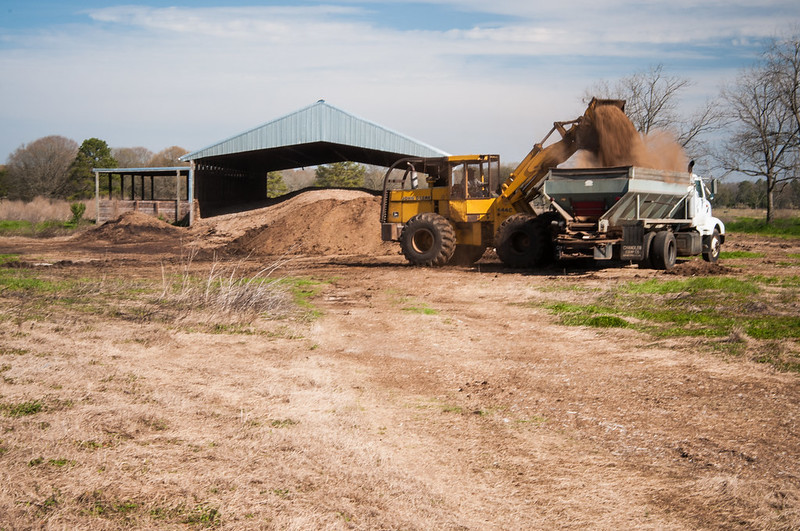
rain will not seep into poultry litter stockpiled in "stackhouses" and carry nutrients to nearby streams
Source: US Department of Agriculture, 20130307-OC-RBN-4061
Every batch of poultry litter has different levels of nutrients. A Tennessee farmer calculated over the years that he always got at least 45-45-45 NPK per ton, or 45 pounds of nitrogen, phosphorous, and potassium per ton of litter. The litter also averaged 10 pounds/ton of sulfur, and was rich in biological organisms. They decomposed other organic material in the soil, releasing more nutrients.
The release requires time, and the nutrients in applied litter require about three years to become fully available. As the Tennessee farmer described the process:2
Source: Chesapeake Bay Foundation, BEC Learning Series: Chicken Litter: The Sky is Falling Webinar
In 1999 the General Assembly passed the Virginia Poultry Waste Management Act. As of 2023, sites with 20,000 chickens or 11,000 turkeys must obtain a Virginia Pollution Abatement (VPA) Regulation and General Permit for Poultry Waste Management.3
It created a program to move ultimately 89,000 tons of poultry waste outside of the Chesapeake Bay watershed, or at least to farms within the watershed where the soil was not being saturated with nutrients from poultry litter. Because the value/ton was low, transportation subsidies were offered of $7.50, $15 or $20 per ton to move the litter from source location to where it could be used as fertilizer. Litter moved from farms in Page, Rockingham or Accomack counties, to farms with a nutrient management plan and a low phosphorus reading, was eligible for the subsidy.
In 2022, the Virginia Department of Conservation and Recreation increased subsidies by $10/ton to $17.50, $25, or $30 per ton of litter. The highest subsidy supported transport to locations outside the Chesapeake Bay watershed, while the lowest subsidy applied to counties nearest the three sources of the litter.
Starting in 2024, poultry farmers had to report the quantity of litter transported, based on the general permit authorized by the Virginia State Water Control Board. That was expected to document better how the potential impact of the nutrients were mitigated by transport to soils that could absorb the phosphorous and to places outside of the Chesapeake Bay watershed.4
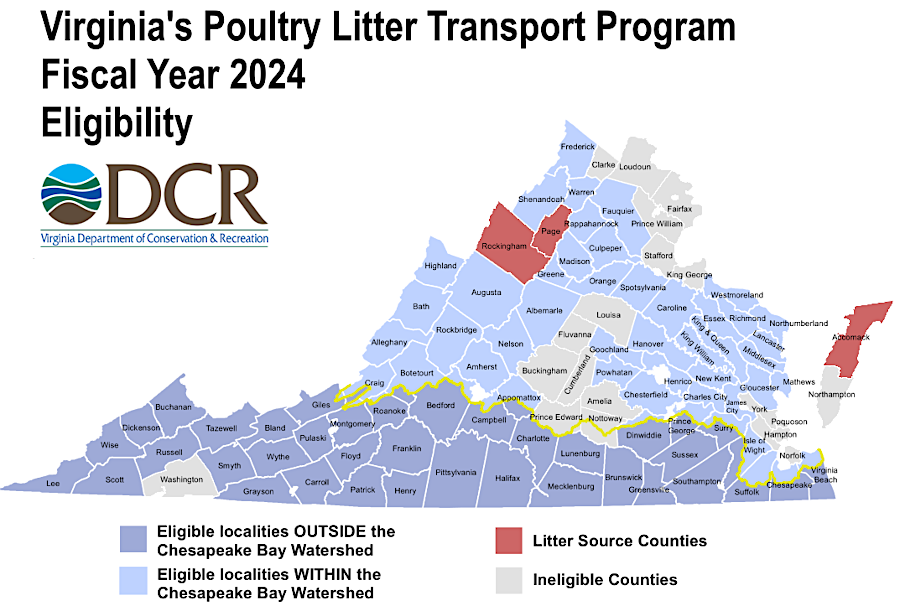
the state government subsidizes the transport of poultry litter outside of the Chesapeake Bay watershed
Source: Virginia Department of Conservation and Recreation (DCR), Virginia Poultry Litter Transport Incentive Program
The value of poultry litter is variable. Broiler litter has a higher percentage per ton of nitrogen and phosphorous than bed litter. Broiler litter also contains more sulfur, magnesium, and other micronutrients. Poultry farmers may be willing to sell bed litter at a lower price, but the additional costs of transporting more truckloads and spreading the extra volume may make the offer economically unattractive to farmers.5
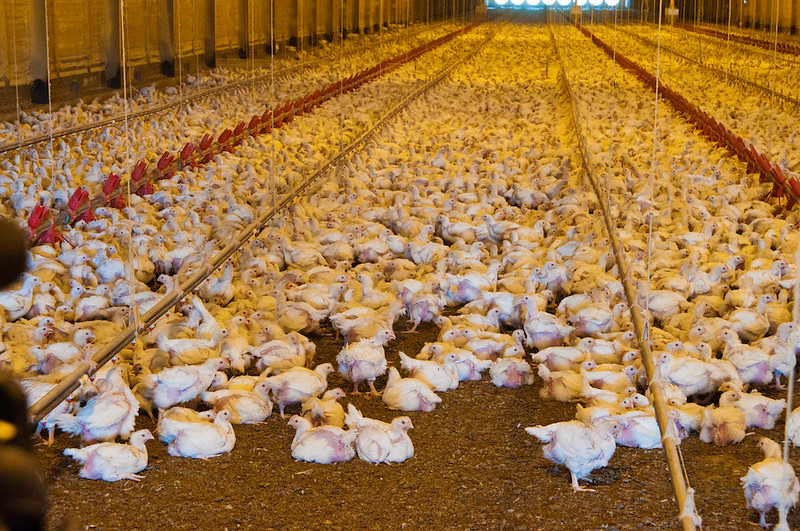
concentrating chickens in poultry houses creates concentrations of poultry litter
Source: US Department of Agriculture, 20130822-OC-RBN-2946
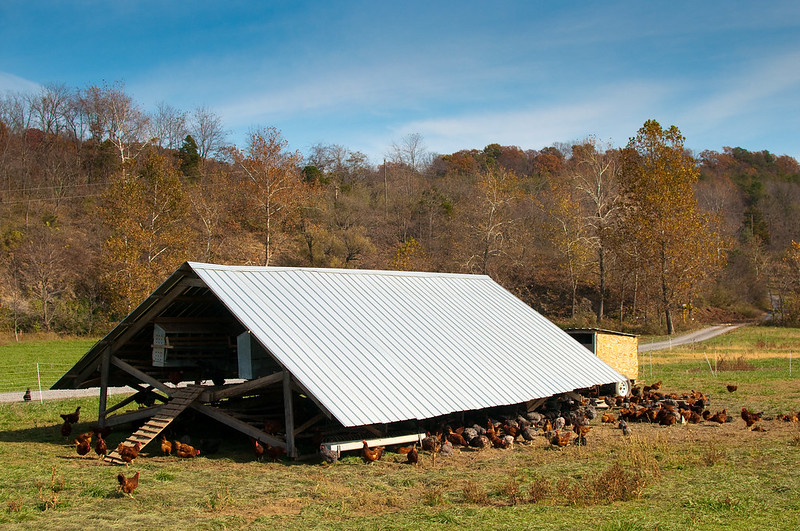
Polyface Farms spreads chicken litter across the fields, rather than concentrates it indoors in a chicken housed
Source: Brian Johnson & Dane Kantner, Pastured Poultry at Polyface

setbacks for applying poultry litter prevent environmental damage at the "receiving" site
Source: Virginia Department of Environmental Quality (DEQ), Fact Sheet - Requirements for Poultry Litter Use and Storage